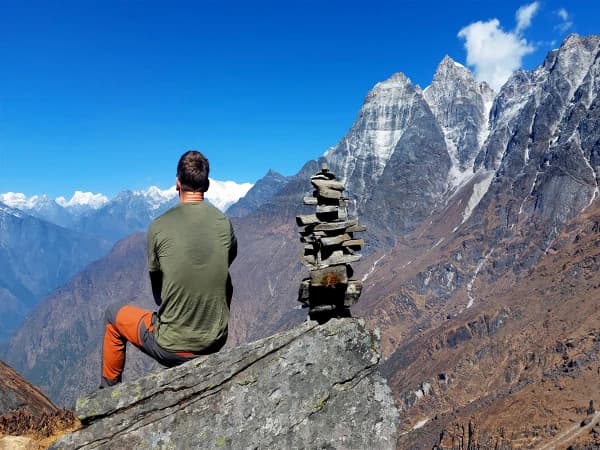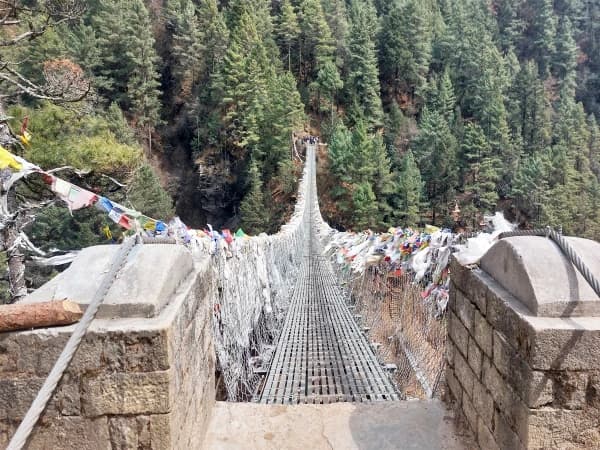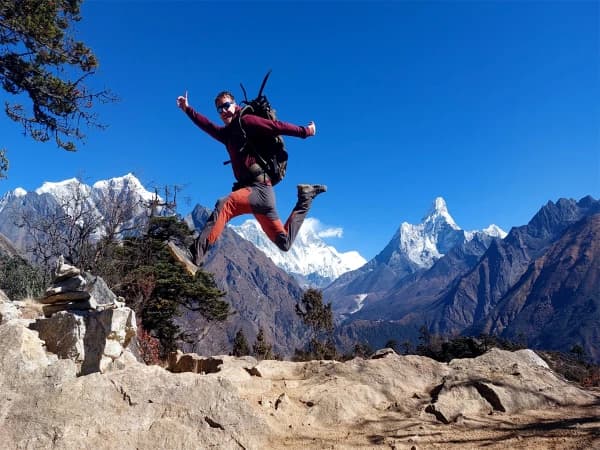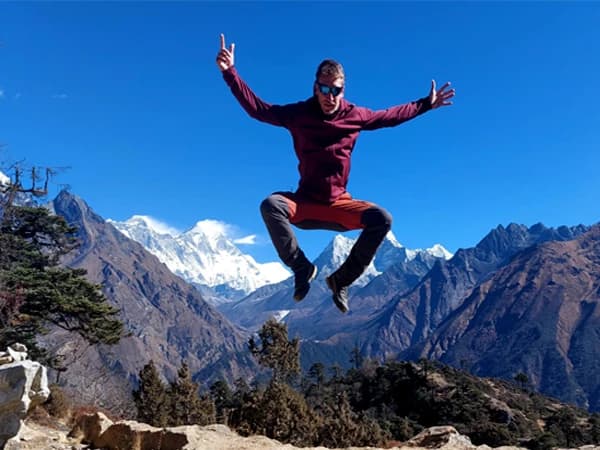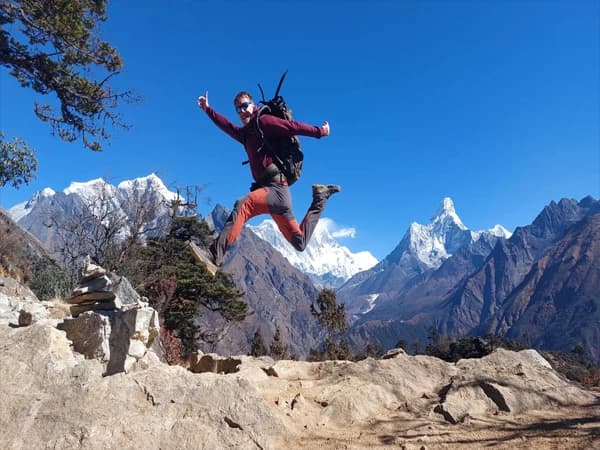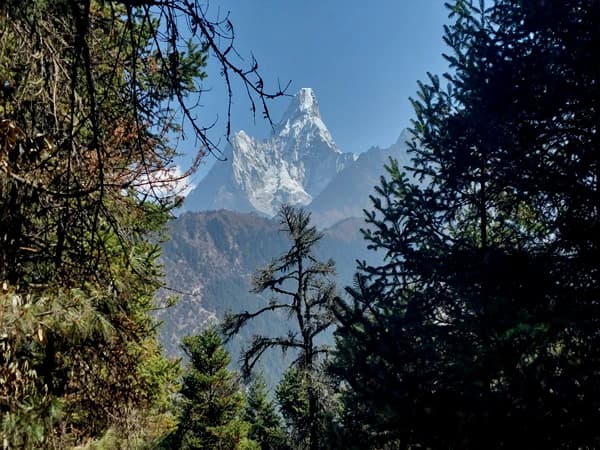Embark on the Chhukung Ri Valley Trek, a truly unique and extraordinary route within the Everest Trekking region. This trek promises unparalleled views of Mount Everest and the neighboring peaks, showcasing their magnificence. Additionally, it offers an immersive cultural experience as you pass through the Sherpa villages, following the footsteps of the renowned Everest Base Camp trek until Dingboche. From there, you will venture towards Chhukung Village and undertake a thrilling hike to Chhukung Ri, where you will be rewarded with breathtaking vistas of the world's tallest peaks and panoramic landscapes. Finally, you will retrace your steps back to Kathmandu along the same trail.
For those who seek a venturesome trek parallel to the peak climbing experience at the lap of the majestic Himalayas, Chukung Ri Trekking is perfectly compatible. This adventurous trekking journey is a unique blend comprising an elegant Chhukung valley featuring the ‘climbing peak of Chukung Ri’ and a sublime Khumbu region comprising picturesque landscapes, exquisite flora and fauna, heartwarming locals, and inimitable hospitality. With an elevation of 5,550m, Chhukung Ri Peak is accessible for climbing, and is categorized as a group “A” climbing peak by the Nepal Mountaineering Association.
Highlights:
- Reach the summit of Chhukung Ri, standing at an elevation of 5,550 meters.
- Explore the beautiful monastery at Tengboche, adorned with prayer flags.
- Take a stroll through the vibrant markets of Namche, a renowned trading center in the Khumbu region
- Immerse yourself in the rich Tibetan culture and indulge in delectable Himalayan dishes.
- Traverse picturesque suspension bridges and marvel at the numerous canyons along the trail.
- Avail group discount prices for your convenience.
- Ascend to the peak of Chhukung Ri, situated at an altitude of 5,550 meters above sea level.
- Discover the exquisite monastery at Tengboche, adorned with vibrant prayer flags.
- Explore the bustling markets of Namche, a traditional trading hub in the Khumbu region.
- Immerse yourself in the enchanting Tibetan culture and relish the flavorsome Himalayan cuisine.
- Cross vibrant suspension bridges and witness the breathtaking canyons scattered along the trail.
- Take advantage of discounted prices for group bookings.
Lukla is the first town we encounter in the Khumbu region, where our exhilarating trek begins. From here, we ascend the Dudh Kosi river valley, traverse narrow suspension bridges over the ferocious river, and reach the town of Namche Bazaar, chiefly inhabited by ethnic Sherpa communities. This lovely town showcases alluring mountain vistas for its visitors. Subsequently, we trek across the Sherpa settlements of Tengboche and Dengboche and advance to the magnificent Chhukung Valley. We now trek to Chhukung Ri Base Camp, situated at the foot of Chhukung Ri, a non-technical climbing peak that demands little or no mountaineering experience. Despite being a less renowned climbing peak in the Everest region, Chhukung Ri renders insight into peak climbing, which is regarded as appropriate for beginner peak climbers. Panoramas of Himalayan mountaintops such as Everest (8,848m), Nuptse, Cho Oyu (8,201m), Lhotse, Makalu, Ama Dablam, Thamserku, Kantega, Tawache, and other neighboring peaks are a prominent aspect of Chhukung Ri Peak.
The best season for Chukung Ri peak climbing is from March to May and September to December. Apart from thrilling activities, this trek allows trekkers to witness the distinct culture, traditions, and values of the communities residing in this rugged terrain for generations. Along the trail, trekkers tend to notice and admire Buddhist monuments such as monasteries, stupas, chortens, prayer wheels, and mani walls; reflecting Buddhist fine arts, Buddhist mantras, and vivid prayer flags. The Chhukung Ri Trek presents a refreshing alternative to the bustling and overcrowded Everest Base Camp Trek in the Everest region. This trek provides an extraordinary opportunity to witness the awe-inspiring grandeur of the world's majestic peaks from proximity. Additionally, the captivating Sherpa community, adorned with their rich cultural heritage, along with the serene monasteries and vibrant Tea Houses, serve as a constant source of inspiration for all those embarking on their expedition to Chhukung Ri.
The Best Seasons for the Chhukung Ri Trek
The Chhukung Ri Trek is best experienced during the Autumn season, which spans from September to November. This time of year offers optimal visibility, pleasant temperatures, and a favorable environment for trekking. Additionally, you are less likely to encounter rain and snowfall during this season. Autumn is widely regarded as the ideal time to embark on the Chhukung Ri journey, as well as other trekking routes in Nepal. Following Autumn, Spring (March to May) is the second-best season for the trek. During this time, you will be treated to the beautiful rhododendron bloom and have the opportunity to witness various bird species. On the other hand, Winter (December to February) and the rainy season (June to August) are considered non-ideal seasons for the Chhukung Ri Trek due to unfavorable weather conditions. If you are considering embarking on the Chhukung Ri Trek, opting for February, August, or December would be a wise decision if you wish to avoid the bustling crowds along the Trail. During these months, the weather conditions are generally favorable, although occasionally they may not align with expectations.
Chhukung Ri Trekking Cost for 2025-2026
The price range for the Chhukung Ri Trek with Himalayan Trekking Path Company ranges from USD 1100 to USD 1400 per person. The cost varies depending on the services provided, amenities included in the package, duration of the trek, as well as what is covered and not covered. Our Chhukung Ri Trek package is all-inclusive, covering everything from arrival to departure, such as transportation, flights, accommodations, guides, porters, permits, and more as outlined in the itinerary. Please see below for the best deals based on group size with Himalayan Trekking Path Company.
- The Cost of the Chhukung Ri Trek is USD1400 if you are solo
- The Cost of the Chhukung Ri Trek is USD 1200 per person for groups of 2-6
- The Cost of the Chhukung Ri Trek is USD 1100 per person for groups of 7-10




